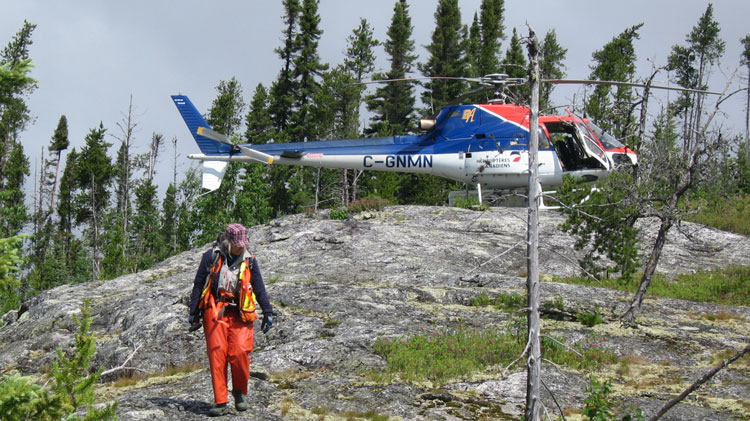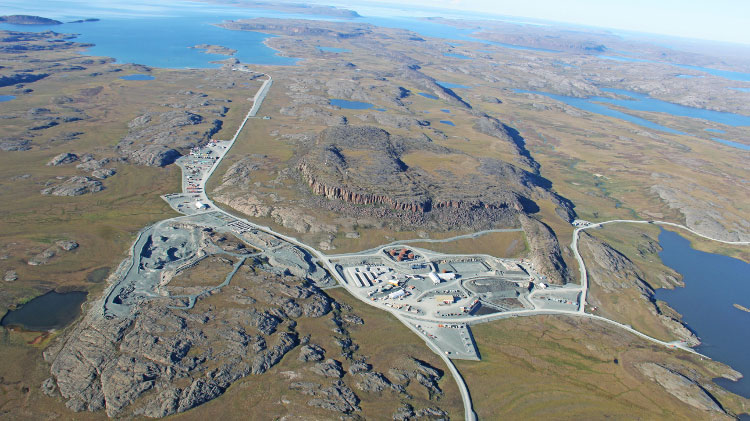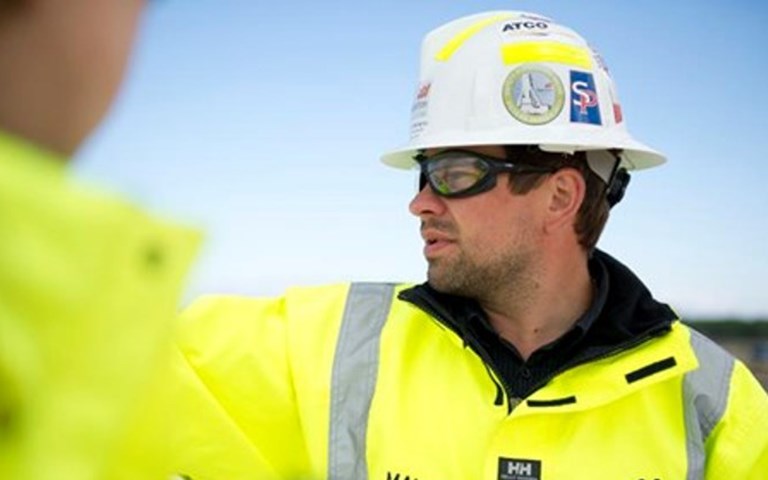Uncertain about the future of BHP Billiton’s Jansen mine? Drop in on Maury Simoneau, site superintendent
Last summer, in the midst of the market upheaval caused by the breakup of one of the world’s two dominant potash marketing agencies, BHP Billiton announced another US$2.6 billion in spending on its Jansen project, which is located in the heart of Saskatchewan’s potash producing region.
Maury Simoneau, site superintendent, is responsible for the ongoing construction of Discovery Lodge, a luxurious camp meant to house more than 2,500 workers expected to be needed for the mine’s construction. The camp will include 2,586 160-square-foot rooms equipped with their own washroom (including toilet and shower), a 1,200-person dining hall, a 200-person movie theatre, as well as a 14,000-square-foot recreation centre complete with steam rooms, squash courts, a running track, two golf simulators and a full-size gymnasium to accommodate such sports as basketball and volleyball.
Simoneau’s previous experience involved project management and construction coordinator roles on other resource projects in Western Canada, including in the oil sands and forestry industries. He has a special focus in civil construction and modular camp construction. CIM Magazine spoke to Simoneau about the features of the camp and the challenges of building it, particularly during the harsh winter in the Canadian Prairies.
CIM: What stage is the project at as of early 2014?
Simoneau: The camp is broken into three phases. Phase 1 is complete and occupied, which is 562 rooms of the 2,586 [total]. The second phase is what we are working on right now, comprising an additional 660 rooms, the core 90,000-square foot building and the gym complex. We are diligently working towards Phase 2 and having that completed by the summer. The final phase is broken into two pieces, which is the remainder of the rooms, as well as the theatre and the bus barn.
CIM: Why was the project named Discovery Lodge?
Simoneau: BHP held a competition among its employees to name the camp. It was a graduate student who came up with the name, Discovery Lodge. She is still employed by the company. It’s a very fitting name, as far as I’m concerned. It really speaks to the company coming to the area and embarking on a new business.
CIM: How do you deal with the skilled labour shortage in Western Canada?
Simoneau: You want to offer a suitable schedule for people who are going to be travelling in from other parts of the country or further. You want to have comparable money to the Fort McMurrays of the world. You also want to provide them with a nice environment when they are working away from home. One of the main intents of Discovery Lodge, and building it the right way, is to ensure that we have an operating asset at the end of the day that is going to help us draw the world-class people we need on our project to build the mine safely and efficiently. We’ve been able to find the right kind of folks with the right kind of experience to come to Jansen and help us build the camp.
CIM: How big of an issue is the prairie weather?
Simoneau: We’ve obviously got harsh climatic conditions in Saskatchewan. January and February can present challenges to having the equipment up and running every day. We plan and prioritize work so that temperature-dependent work – mainly earthworks – is completed during the spring, summer and autumn months when the ground isn’t frozen. Temporary structures are also built where required [in order] to complete outside works in a heated environment, for example using heat and hoard, scaffolds, tarps and portable heaters. Ongoing site maintenance [also occurs] to ensure roads, pedestrian walkways, and workfaces are suitable and safe to execute the work.
High wind speeds are another limiting factor. Any really gusty day can limit our ability for work at height or for lifting work. Aerial work platforms and cranes do not operate beyond specific wind and temperature parameters. Discovery Lodge modules have been designed to withstand the wind speeds we anticipate in the Saskatchewan Prairies. Utilities are heat traced and insulated where required for protection to ensure freezing temperatures do not affect their operating integrity.
CIM: What will happen to the camp once the mine is constructed?
Simoneau: When we get to full operation, the camp is not intended to be a permanent fixture on the landscape. The intent is that Discovery Lodge will be decommissioned and taken to another construction site. We are doing all we can to entice the folks that are going to work at the mine in an operating capacity to move into the local communities and bring some contribution to those communities.
The camp’s structures are either modular in design (modular boxes or modular skidded units) or pre-assembled building packages that make the dismantling of each structure relatively easy. A crane is required to lift, set and remove these structures from their pile or concrete foundations. Dorm and utility modules are designed and constructed so that the majority of the work is completed off site. On-site crews “tie in” the modules and complete the required interconnects, whether mechanical, electrical or architectural – known as interior and exterior complexing.
CIM: What are some of the personal advantages you bring to working on this project?
Simoneau: I’ve had experience dealing with camps before, working in the oil sands, and I grew up in the province of Saskatchewan. My whole career has been in Alberta and B.C. This project has enabled me and others to contribute to a mega project a little closer to where we grew up. To be home every night and to work close to home, that’s huge for me.
CIM: You must get questions about whether the Jansen project will go ahead, given that there are some skeptics. What do you tell people on the ground in Saskatchewan?
Simoneau: I always say, “Have a look around.” There’s a lot of work to do and Jansen still needs approval, but we’ve accomplished an awful lot. To me, it’s pretty easy to see where we’re going by just looking around. Everyone has their opinion, but when you drive by the site and look at what we’ve accomplished I think it shows a pretty good picture of where the project is going to go.




